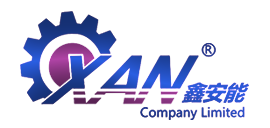
It is divided into drive drum and reversing drum. The roller is the main force transmission component of the belt conveyor (belt conveyor), which is welded by the cylinder skin and the adapter plate. Under normal circumstances, the belt conveyor drum with an outer diameter of less than 320mm uses a seamless steel pipe as the cylinder skin, and the outer diameter of more than 320mm is rolled with steel plate and welded to form a cylinder skin, which is called a welding roller; Some cast steel splices are welded with the cylinder skin as a part of the cylinder, that is, the cast-welded structure drum.
Drive drum: It is the main component that transmits power. It is divided into single drum (the wrapping angle of the tape to the drum is 210 ° ~ 230 °), double drum (the wrapping angle is up to 350 °) and multiple rollers (for high power), etc., and the drum can be divided into steel smooth drum, lagging drum and ceramic drum. The smooth drum is simple to manufacture, but the disadvantage is that the surface friction factor is small, and it is generally used in short-distance conveyors. The main advantage of lagging rollers and ceramic rollers is that they have a large surface friction factor, which is suitable for long-distance large belt conveyors.
Among them, the lagging drum can be divided into light bread rubber roller, diamond-shaped (reticulation) lagging drum, and herringbone groove lagging drum according to different surface shapes. The friction factor of the herringbone groove lagging rubber surface is large, and the anti-slip and drainage properties are good, but there are directional requirements. Diamond-shaped rubber surfaces are used for conveyors that run in both directions. For rollers used in important occasions, it is best to use vulcanized rubber rubber surface. When used in downholes, the rubber surface should be made of flame retardant rubber surface material.
Drum barrel
The chemical composition and mechanical properties of the metal materials used in the drum barrel should meet the corresponding national standards. Before welding, the steel should be pretreated with shot peening using a pretreatment process.
Wheel
The casting quality of the wheel hub should be inspected by magnetic powder or ultrasonic. The longitudinal welds of circumferential welds and small-diameter rollers should be welded on one side and formed on both sides by a special process. The circumferential and longitudinal welds of the drum are all welded with carbon dioxide gas, and non-destructive flaw testing should be carried out to ensure the quality of the welds. Eliminates welding stress and ensures the normal operation of the drum.
Reversing the drum
It is used to change the running direction of the conveyor belt or increase the wrapping angle of the conveyor belt on the transmission roller, and the roller adopts a smooth rubber surface.
The drum shaft should be a forging and be tested non-destructively, and a flaw detection report should be provided. The allowable torque and allowable resultant force should meet the design requirements.
Under the maximum load condition of the drum shaft, the deflection of the shaft between the bearing houses is not taking into account the stiffness of the drum skin.

TradeManager
Skype
VKontakte